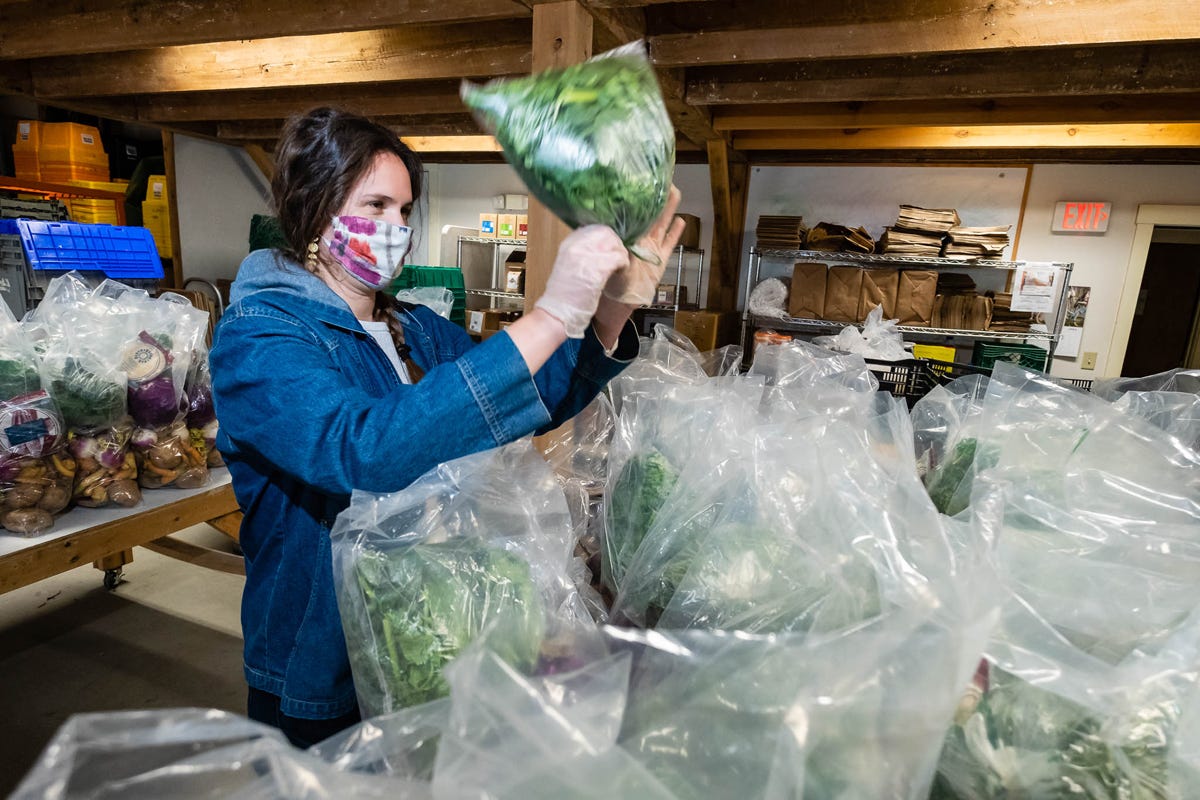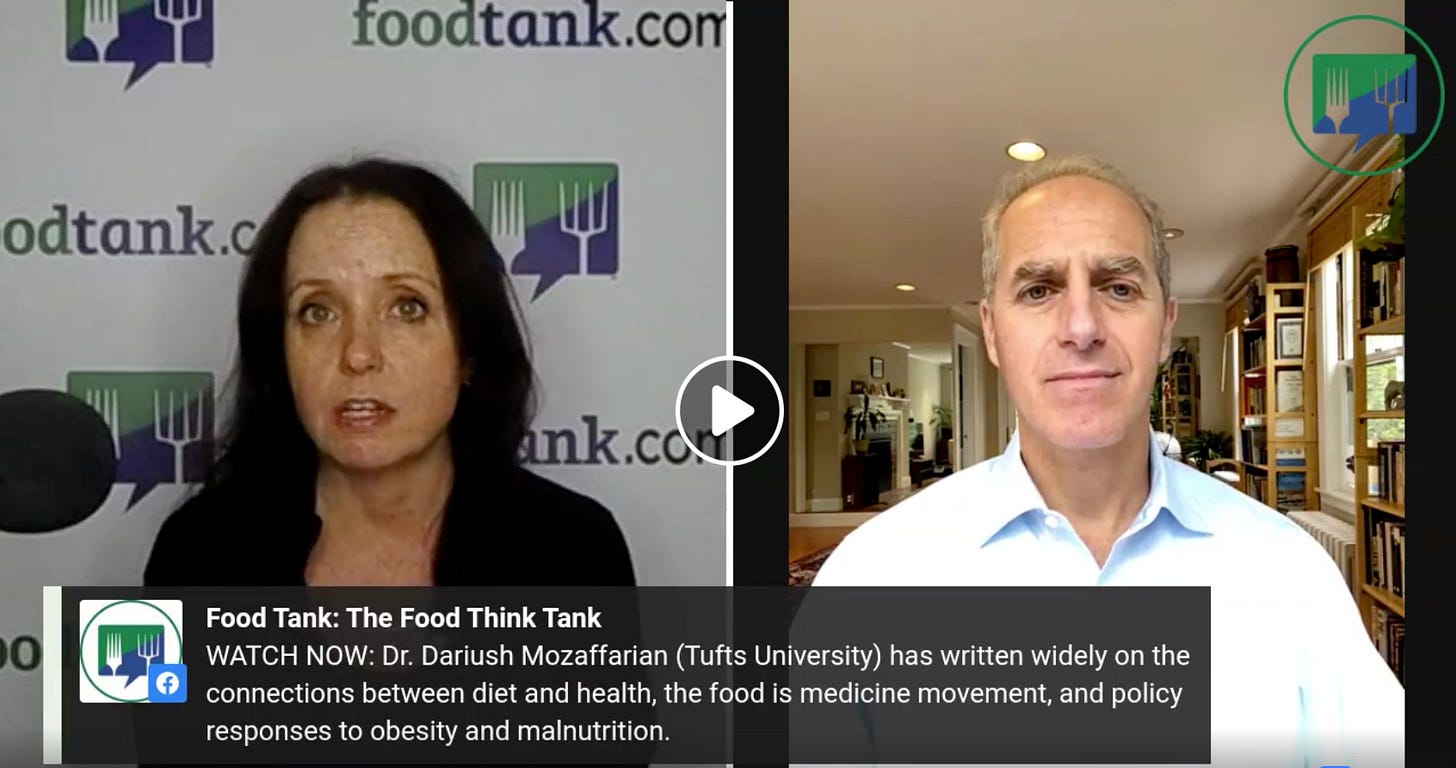Why it's so tough to get produce from farms to food banks
Issue 153: The Box is back, baby.

Hello!
Welcome back to Nosh Box! This is a food newsletter that existed from 2017 to 2018, and again from today (!!!) until who knows when.
Every weekday at lunchtime-ish (for my non-Eastern/Central time friends, you’ll just have to pretend), I’ll swing by your inbox with a link that catches my eye in the food world — something that’s newsworthy, that pulls back the curtain, or that’s just plain wild to read over lunch. (Or whatever a meal looks like nowadays. Mine’s oatmeal and a pear-and-feta flatbread.)
Who am I when I’m not eating oatmeal for lunch? I’m a food journalist in Boston and the research and writing fellow at Food Tank, a food systems think tank. I’m also finishing up a food studies master’s degree in Boston University’s gastronomy program, so among all these, I spend a lot of time in the weeds about food waste, access and equity, “authenticity,” kids’ menus, cheese, etc. It’s a fun time.

So. Here’s what I’ve got today:
COVID has created a pair of parallel problems: (1) with restaurants closed, farms are having a tough time selling crops, and food loss is spiking (this NYT essay is haunting). And (2) with unemployment at its highest levels since the ‘30s, food insecurity is on the rise, too.
So… just have food banks take food directly from farms, right? Well, not that easy. In short, farmers don’t have money to pay people to harvest, nor can they afford to process and transport crops as normal. Then, food banks don’t have the budget to buy those crops at prices the farmers need to survive, and they don’t necessarily have staff or space to handle massive donation influxes. This is a lot to untangle, and you’ll definitely hear more from me about it.
Essentially, what we need is a middle man. So, something I’m watching closely during COVID is the Farms to Food Banks movement, which aims to be the bridge between these two problems. These local programs are crowdfunding to pay fair-market prices to farmers and donate to pantries and shelters. It’s a band-aid, obviously, but probably a life-saving one.
Civil Eats has a really great explainer/overview/national guide to Farms to Food Banks initiatives around the country:
“Many farmers routinely donate farm surpluses to local food banks, but the economic shutdown suddenly ruptured the food supply and farm economies—especially those dependent on restaurants and institutional customers. And most food producers cannot afford to give their premium products away.”
“One of the biggest hurdles in preventing on-farm food waste is logistics. Especially with perishable produce like lettuce, food rescue is urgent. But the costs for coordination, packaging, and transportation are all major obstacles that farming economies cannot readily absorb, and organizations stepping in with funding is proving to be essential.”

And it looks like the USDA is getting in on the middle-man action, too, with $3 billion in grants to buy produce from farmers and deliver it to food relief organizations. (Ivanka and Ag. Secretary Sonny Perdue announced it earlier this week — luckily, while wearing masks. The bar is literally on the floor for this stuff.) Anyway, is it good that the government has turned an eye toward this problem? Sure. Yes. But we have to keep an eye on it too.
Because S H O C K I N G L Y, some of these grants are going to… not the best people for the job. Politico’s Ag team reports that a lavish wedding planning company got $39 million; a business finance firm in California got $16 million to supply milk, and an airport hand lotion vendor got $12 million to create fresh fruit/veg boxes for the west coast.
(Will they follow through? Hopefully! But if not, it wouldn’t be the first time Trumpworld COVID grants have been bungled by the inept goons they were awarded to: If you haven’t yet, read this bananas ProPublica story of how a completely unprepared fixer scored a $34.5 million VA contract for 6 million N95 respirators (a 350% markup) but delivered precisely zero of them.)

One last thing: I’m not just including this because I work for Food Tank, but FT president Danielle Nierenberg’s conversation yesterday with Dariush Mozaffarian, a cardiologist and the dean of Tufts University’s nutrition school, is worth your time:
“We have not invested in the science that we should have invested in up until this point, to have answers to these questions. People are talking about stocking personal protective equipment and stocking ventilators and stocking vaccines — but what about stocking science on food and health and nutrition? That would’ve been incredibly important.”
“I think this is the time to call for a similar office, like the Office of the Director of National Intelligence, for food. It could be the Office for the National Director of Food and Nutrition. A cabinet-level office that brings together all these incredibly important agencies, that are doing great work that’s just fragmented. I think Congress should consider that, the same way they recognized the need to [centralize] national intelligence after September 11.”

See you tomorrow! In the meantime, email me; tweet @ me; click the button below to share this newsletter:

